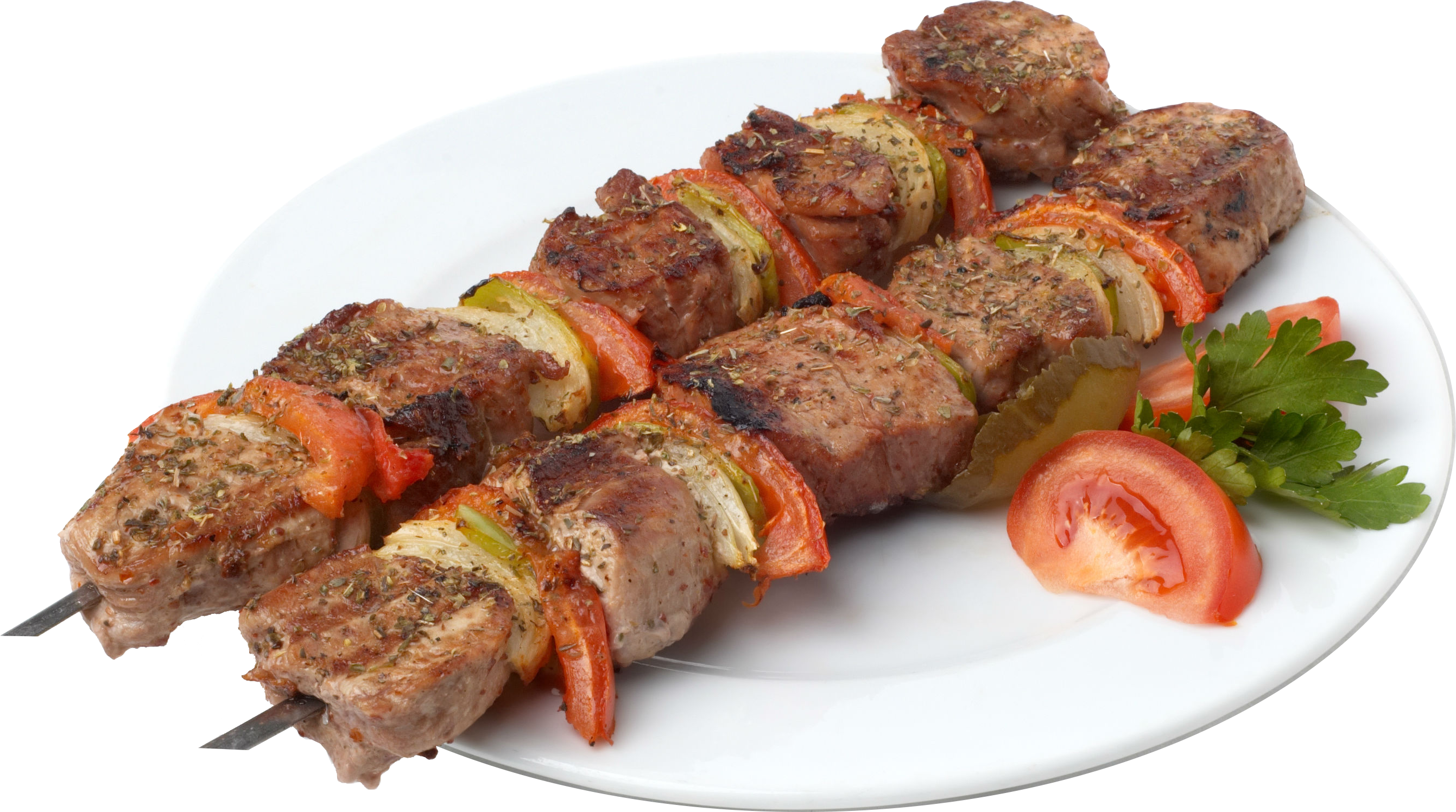
This image has format transparent PNG with resolution 2682x1496.
You can download this image in best resolution from this page and use it for design and web design.
Shashlik PNG with transparent background you can download for free, just click on download button.
Shashlik, or shashlyck (Russian: шашлык shashlykpronunciationⓘ), is a dish of skewered and grilled cubes of meat, similar to or synonymous with shish kebab. It is known traditionally by various other names in the Caucasus, Eastern Europe and Central Asia, and from the 19th century became popular as shashlik across much of the Russian Empire and nowadays in the Russian Federation and former Soviet Union republics
The word shashlik or shashlick entered English from the Russian shashlyk, of Turkic origin. In Turkic languages, the word shish means skewer, and shishlik is literally translated as "skewerable". The word was coined from the Crimean Tatar: "şış" ('spit') by the Zaporozhian Cossacks and entered Russian in the 18th century, from there spreading to English and other European languages. Prior to that, the Russian name for meat cooked on a skewer was verchenoye, from vertel, 'spit'. Shashlik did not reach Moscow until the late 19th century. From then on, its popularity spread rapidly; by the 1910s it was a staple in St Petersburg restaurants and by the 1920s it was already a pervasive street food all over urban Russia.
Shashlik was originally made of lamb, but nowadays it is also made of pork, beef, chicken or venison, depending on local preferences and religious observances. The skewers are either threaded with meat only, or with alternating pieces of meat, fat, and vegetables, such as bell pepper, onion, mushroom and tomato. In Iranian cuisine, meat for shashlik (as opposed to other forms of shish kebab) is usually in large chunks, while elsewhere the form of medium-size meat cubes is maintained making it similar to brochette. The meat is marinated overnight in a high-acidity marinade like vinegar, dry wine or sour fruit/vegetable juice with the addition of onions, herbs and spices.
While it is not unusual to see shashlik today listed on the menu of restaurants, it is more commonly sold in many areas in the form of fast food by street vendors who roast the skewers on a mangal over wood, charcoal, or coal. It is also cooked in outdoor environments during social gatherings, similarly to barbecue in English-speaking countries.
Despite the simplicity of preparing shashlik, the process of frying meat over an open fire can cause inconvenience for residents of apartment buildings.
In this page you can download free PNG images: Shashlik PNG images free download